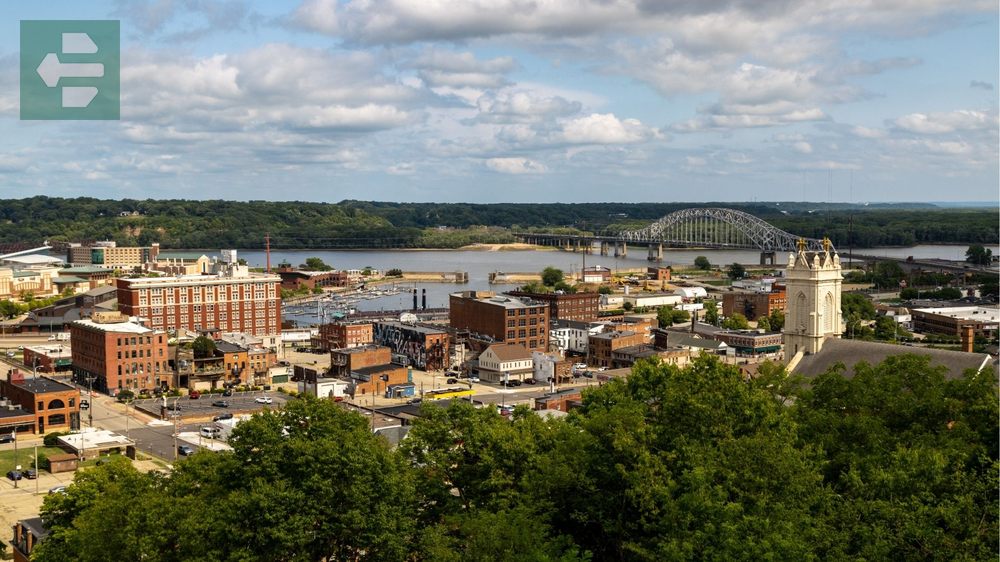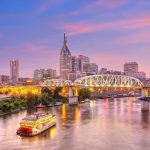Iowa offers unexpected treasures beyond its rolling farmland. The best places to visit in Iowa include Des Moines with its vibrant arts district, the famous Field of Dreams baseball site, and historic Dubuque perched along the Mississippi River. Cedar Rapids, Iowa City, and the legendary RAGBRAI cycling event round out the state's top attractions.
Keep reading as we uncover Iowa's hidden gems and must-see destinations that will transform your Midwest adventure into something unforgettable.
List of Contents
- 1. Des Moines: Prairie Capital with Urban Edge
- 2. Field of Dreams: Where Baseball Dreams Live
- 3. Iowa City: College Town with Literary Soul
- 4. Dubuque: Mississippi River Historic Gem
- 5. Cedar Rapids: Culture in the Corn Belt
- 6. RAGBRAI: Rolling Party Across Iowa
- 7. Davenport: Quad Cities Gateway
- 8. Ames: Small City, Big Ideas
- 9. Cedar Falls: Northern Iowa Charm
- 10. Council Bluffs: Where the West Began
- 11. Waterloo: Twin City Heritage
- 12. Sioux City: Three-State Meeting Point
- Your Iowa Adventure Awaits
1. Des Moines: Prairie Capital with Urban Edge
Des Moines surprises visitors with its thriving downtown and world-class sculpture park. The city sits where the Raccoon and Des Moines rivers meet, creating natural green spaces that weave through the urban core.
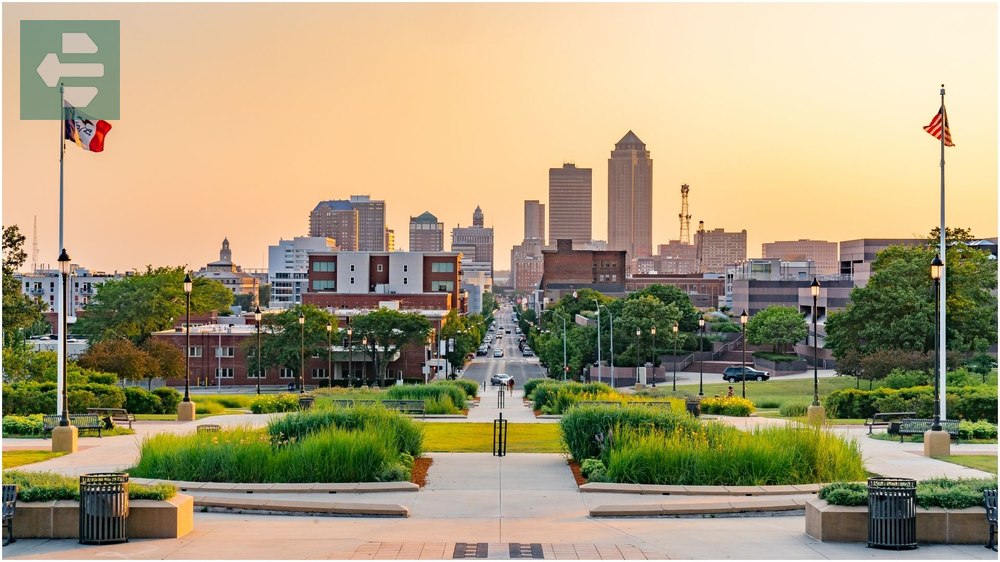
The East Village buzzes with local breweries and farm-to-table restaurants. Court Avenue comes alive after dark with music venues that showcase everything from indie rock to jazz.
On Saturday mornings, the Downtown Farmers Market transforms the capitol grounds into Iowa's largest outdoor market. Arrive early—the sweet corn sells out fast.
Quick Facts:
- Peak Season: May-September
- How to Get There: Fly into Des Moines International Airport
- Entry Fees: Most attractions free-$15
- Suggested Stay: 2-3 days
- Must-See: Pappajohn Sculpture Park, State Capitol, East Village
2. Field of Dreams: Where Baseball Dreams Live
This baseball diamond carved from a cornfield draws pilgrims from around the world. The movie site remains exactly as it appeared in the 1989 film, complete with the white farmhouse and that iconic backstop.

I watched a father teaching his son to swing a bat here at sunset. The cornrows stretched endlessly in every direction. That's when I understood why this place moves people—it's about more than baseball.
The field stays open year-round. Bring a glove. Someone always wants to play catch.
Quick Facts:
- Peak Season: April-October
- How to Get There: 30 minutes northeast of Cedar Rapids
- Entry Fees: Free
- Suggested Stay: Half day
- Must-See: Baseball diamond, farmhouse, corn maze (seasonal)
3. Iowa City: College Town with Literary Soul
Home to the prestigious Iowa Writers' Workshop, this university town pulses with creative energy. The Pedestrian Mall downtown creates a European-style walking district lined with independent bookstores and coffee shops.
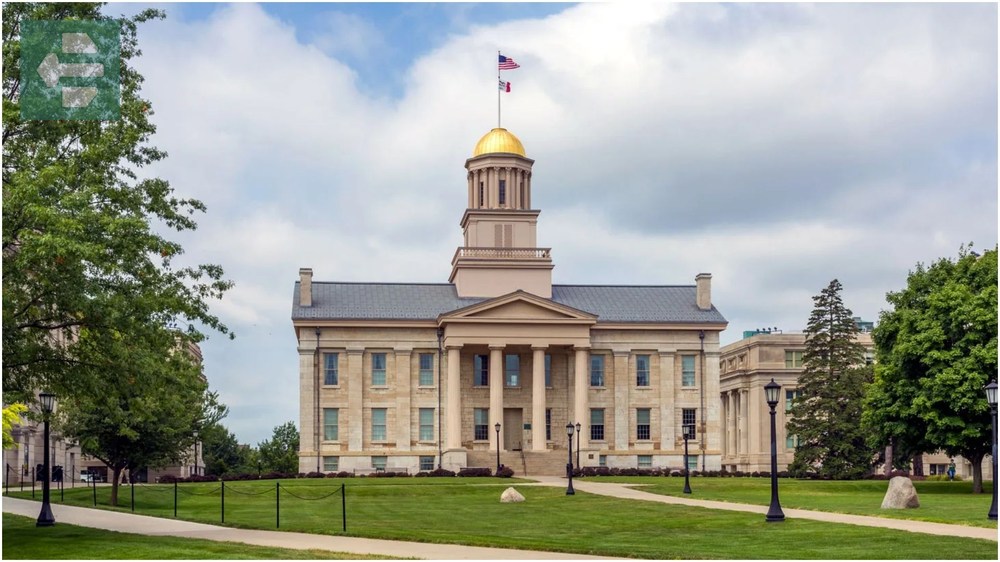
The University of Iowa campus spreads along the Iowa River, with the Old Capitol building serving as the city's crown jewel. Students and locals gather at the outdoor amphitheater for summer concerts.
Local tip: Visit Prairie Lights Bookstore after 9 PM when writers often gather for impromptu readings over wine.
Quick Facts:
- Peak Season: September-November, March-May
- How to Get There: 2 hours from Des Moines via I-80
- Entry Fees: Most activities free-$10
- Suggested Stay: 1-2 days
- Must-See: University of Iowa campus, Pedestrian Mall, Iowa River
4. Dubuque: Mississippi River Historic Gem
Dubuque climbs steep bluffs above the Mississippi River, its Victorian architecture intact from the lumber boom era. The city feels like stepping back 150 years, especially in the historic millwork district.

The Fenelon Place Elevator, the world's shortest and steepest scenic railway, carries visitors 296 feet up the bluff in 90 seconds. The view spans three states—Iowa, Illinois, and Wisconsin.
River barges still pass below, just as Mark Twain described. The whistle echoes off limestone cliffs that tower 400 feet above the water.
Quick Facts:
- Peak Season: May-October
- How to Get There: 3 hours northeast of Des Moines
- Entry Fees: $3-$12 for attractions
- Suggested Stay: 2 days
- Must-See: Fenelon Place Elevator, Historic Millwork District, Mississippi River Museum
5. Cedar Rapids: Culture in the Corn Belt
Cedar Rapids rebuilds itself around art and innovation after devastating 2008 floods. The city now showcases one of the world's largest collections of Grant Wood paintings at the Cedar Rapids Museum of Art.
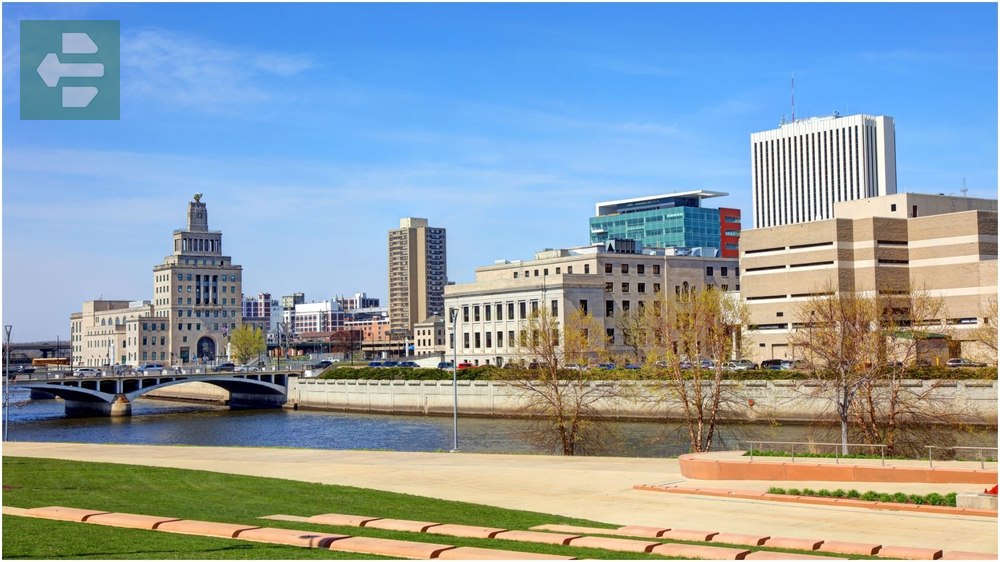
The Czech & Slovak Museum & Library preserves the immigrant heritage that shaped this community. Traditional festivals fill the calendar with polka music and authentic cuisine.
NewBo City Market operates year-round as an indoor farmers market and food hall. Local vendors sell everything from Iowa honey to artisan cheese.
Quick Facts:
- Peak Season: May-September
- How to Get There: 1.5 hours from Des Moines via I-380
- Entry Fees: $5-$15 for museums
- Suggested Stay: 1-2 days
- Must-See: Cedar Rapids Museum of Art, Czech & Slovak Museum, NewBo District
6. RAGBRAI: Rolling Party Across Iowa
The Register's Annual Great Bicycle Ride Across Iowa transforms into a week-long celebration each July. Twenty thousand cyclists pedal 400+ miles from the Missouri River to the Mississippi River.

Small Iowa towns become temporary cities as riders descend for food, music, and local hospitality. Pork chops, pie, and cold beer fuel the journey across rolling prairie.
I joined for one day near Newton. Strangers offered water, mechanical help, and directions without being asked. That's Iowa generosity in motion.
Quick Facts:
- Peak Season: Last full week of July
- How to Get There: Different route each year across Iowa
- Entry Fees: $175 for full week
- Suggested Stay: 1-7 days
- Must-See: Small town stops, Iowa hospitality, prairie landscapes
7. Davenport: Quad Cities Gateway
Davenport anchors the Iowa side of the Quad Cities, where the Mississippi River changes direction and creates dramatic views. The city preserves its riverboat heritage while embracing modern development.
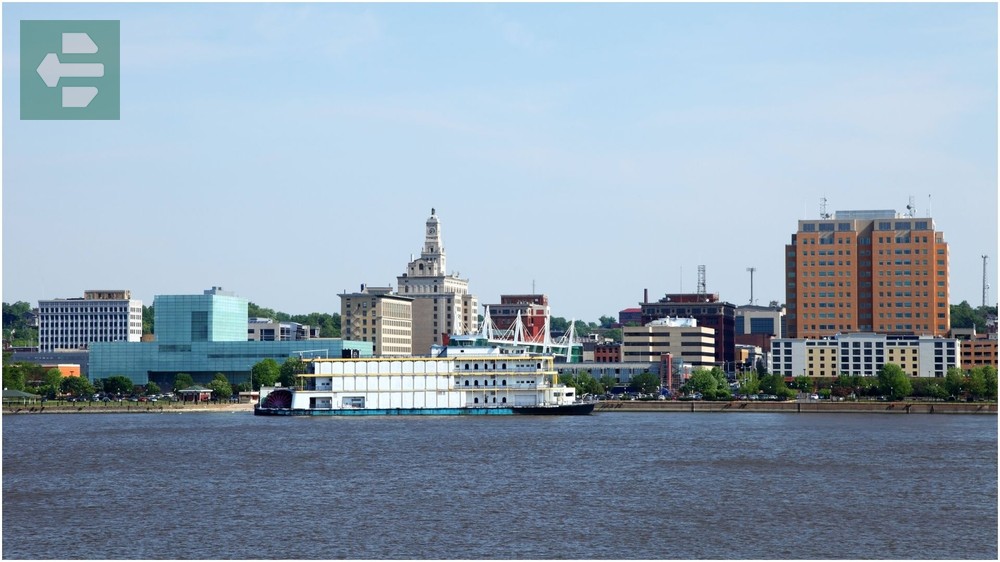
The Figge Art Museum's angular glass architecture contrasts with historic downtown buildings. Inside, Grant Wood and Thomas Hart Benton paintings capture Midwest character.
River bandits once hid along these banks. Now paddle wheelers offer dinner cruises past islands where outlaws cached their loot.
Quick Facts:
- Peak Season: May-October
- How to Get There: 2.5 hours from Des Moines via I-80
- Entry Fees: Free-$12 for attractions
- Suggested Stay: 1-2 days
- Must-See: Figge Art Museum, Mississippi riverfront, Village of East Davenport
8. Ames: Small City, Big Ideas
Home to Iowa State University, Ames combines college town energy with agricultural innovation. The campus spreads across 1,813 acres of gently rolling hills and features some of Iowa's most beautiful architecture.
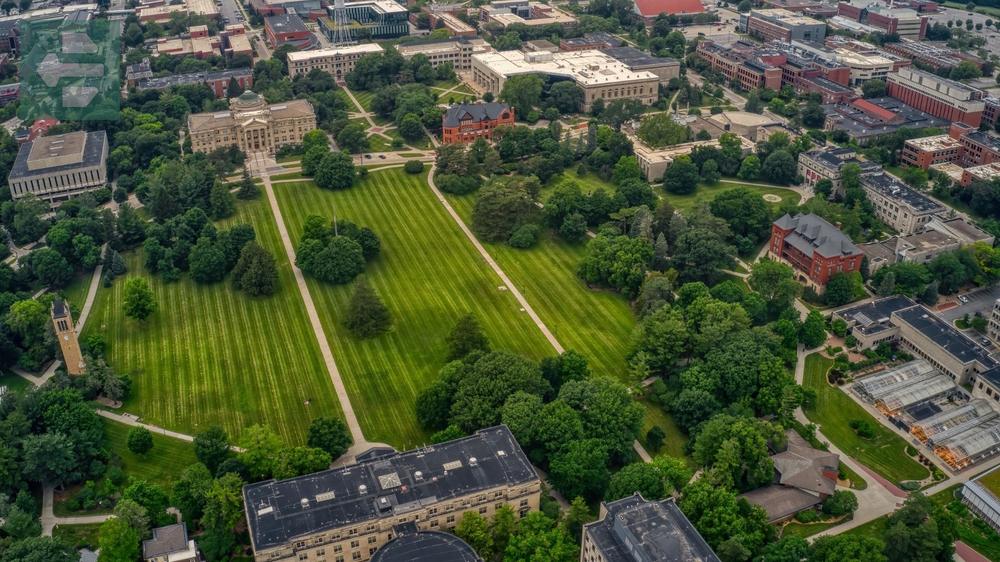
Reiman Gardens bloom with themed displays that change seasonally. The butterfly conservatory houses over 800 tropical butterflies year-round in a climate-controlled paradise.
Main Street offers local shops and restaurants frequented by professors, students, and families. The pace stays relaxed even during the academic year.
Quick Facts:
- Peak Season: September-November, April-June
- How to Get There: 30 minutes north of Des Moines
- Entry Fees: $3-$12 for attractions
- Suggested Stay: 1 day
- Must-See: Iowa State University campus, Reiman Gardens, Main Street
9. Cedar Falls: Northern Iowa Charm
Cedar Falls sits along the Cedar River, its downtown anchored by the historic Oster Regent Theatre. The University of Northern Iowa campus adds youthful energy to this community of 40,000.

The Cedar Valley Trail connects Cedar Falls to Waterloo via a paved path perfect for walking or cycling. Limestone bluffs rise above the river, creating scenic overlooks.
Local galleries showcase regional artists, while the Gallagher Bluedorn Performing Arts Center hosts touring Broadway shows and concerts.
Quick Facts:
- Peak Season: May-October
- How to Get There: 2 hours northeast of Des Moines
- Entry Fees: Free-$10 for most activities
- Suggested Stay: 1 day
- Must-See: University of Northern Iowa, Cedar Valley Trail, historic downtown
10. Council Bluffs: Where the West Began
Council Bluffs overlooks the Missouri River valley from Iowa's western edge. This is where the transcontinental railroad began its journey to California, making it the literal starting point of westward expansion.

The Union Pacific Railroad Museum preserves artifacts from the railroad's golden age. Steam locomotives and vintage passenger cars tell the story of American movement.
Climb to the top of the Kanesville Tabernacle for panoramic views across the Missouri River into Nebraska. Mormon pioneers gathered here before their trek to Utah.
Quick Facts:
- Peak Season: April-October
- How to Get There: 2.5 hours southwest of Des Moines
- Entry Fees: $3-$8 for attractions
- Suggested Stay: 1 day
- Must-See: Union Pacific Railroad Museum, historic downtown, Missouri River views
11. Waterloo: Twin City Heritage
Waterloo grew alongside Cedar Falls as a manufacturing center, its economy built on John Deere tractors and Rath Packing Company. Today, the city reinvents itself while honoring its industrial heritage.
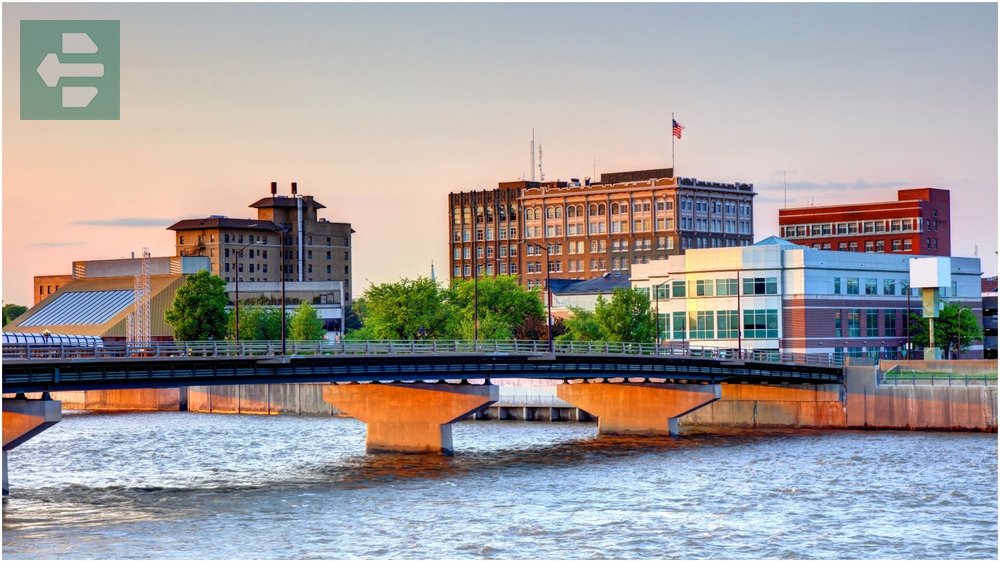
The Grout Museum District preserves local history through multiple museums housed in a former department store. The planetarium offers shows that transport visitors beyond Iowa's prairie horizon.
The Cedar Valley SportsPlex hosts regional tournaments while MyState Bank Arena brings in touring concerts and sporting events.
Quick Facts:
- Peak Season: May-September
- How to Get There: 2 hours northeast of Des Moines
- Entry Fees: $5-$12 for attractions
- Suggested Stay: 1 day
- Must-See: Grout Museum District, Cedar Valley SportsPlex, downtown riverfront
12. Sioux City: Three-State Meeting Point
Sioux City commands bluffs overlooking the Missouri River where Iowa, Nebraska, and South Dakota converge. The city's Loess Hills location creates unique prairie ecosystem found nowhere else on Earth.

The Sergeant Floyd River Museum and Welcome Center sits on a restored riverboat permanently moored on the Missouri River. Interactive exhibits explain the region's river transportation history.
Historic Fourth Street features restored buildings housing antique shops, restaurants, and the beautiful Orpheum Theatre, which still hosts live performances.
Quick Facts:
- Peak Season: May-October
- How to Get There: 3.5 hours northwest of Des Moines
- Entry Fees: Free-$8 for attractions
- Suggested Stay: 1-2 days
- Must-See: Sergeant Floyd Monument, Historic Fourth Street, Missouri River views
Your Iowa Adventure Awaits
The best places to visit in Iowa reveal a state far more diverse than most travelers expect. From the literary streets of Iowa City to the baseball dreams living in that Dyersville cornfield, Iowa rewards curious travelers.
Pack comfortable walking shoes and an appetite for local flavors. These twelve destinations showcase why Iowa deserves a spot on your travel list.
Your Midwest adventure starts here. The prairie is waiting.
